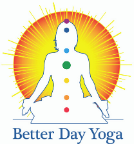
Last month’s newsletter featured Warrior I. I opened with a reference to the meaning of the Sanskrit word for Warrior Pose as well as a warrior reference in regard to the Solar Plexus Chakra. Please refer to the archives for more.
I offer the following opener from a great new book, Yoga for Movement Disorders, Renee Le Verrier: “Virabhadrasana, or warrior pose, builds strength and stamina in the face of battle, the everyday challenges as well as the life-changing ones. There are three warrior poses. In the first two, the reach is in opposite directions. The back arm and leg represent the past and the front limbs symbolize the future. While our hands and feet are reaching for both what was and what will be, our minds and bodies remain centered in the present moment. It is helpful to keep this in mind while in the poses, noticing if your body is leaning forward or back rather than balanced in the middle.”
Now for the pose: From Warrior I (with your right leg forward), keep your heels aligned as you rotate your hips and torso to the left and your back, left foot out approximately 90 degrees making it parallel to the short edge of the mat. Square your hips and shoulders lining them with the long edge of the mat. Bring your arms down parallel to the floor and extend them actively out to the sides, at shoulder level, in opposite directions, palms down. Relax your shoulders down and back away from the ears, firming your shoulder blades to the back; and lift the chest. Your tailbone points down and your spine is long. Stretch both sides of your torso upwards. Your hips are level, avoiding “sassy hips” with one hip hiked up-which I was guilty of for far too long!
Make sure your front knee stacks directly over the ankle, and not beyond, making your shin perpendicular to the ground. Your right thigh should come no lower than parallel to the ground. Lift your left inner thigh and keep the left knee straight. If it drops your chest will cave in. The center of the left knee lines up with the center of the left ankle so you don’t torque the knee. Both feet are pressed evenly into the floor. Focus weight on the back heel.
Keep the shoulders directly over the pelvis. Avoid leaning in either direction. Look out over the front hand. Energetically pull the heels toward each other so the body holds the poses vs. just hanging out in the joints. Turn your head and look over your right arm. Focusing on your hands boosts your energy in this pose.
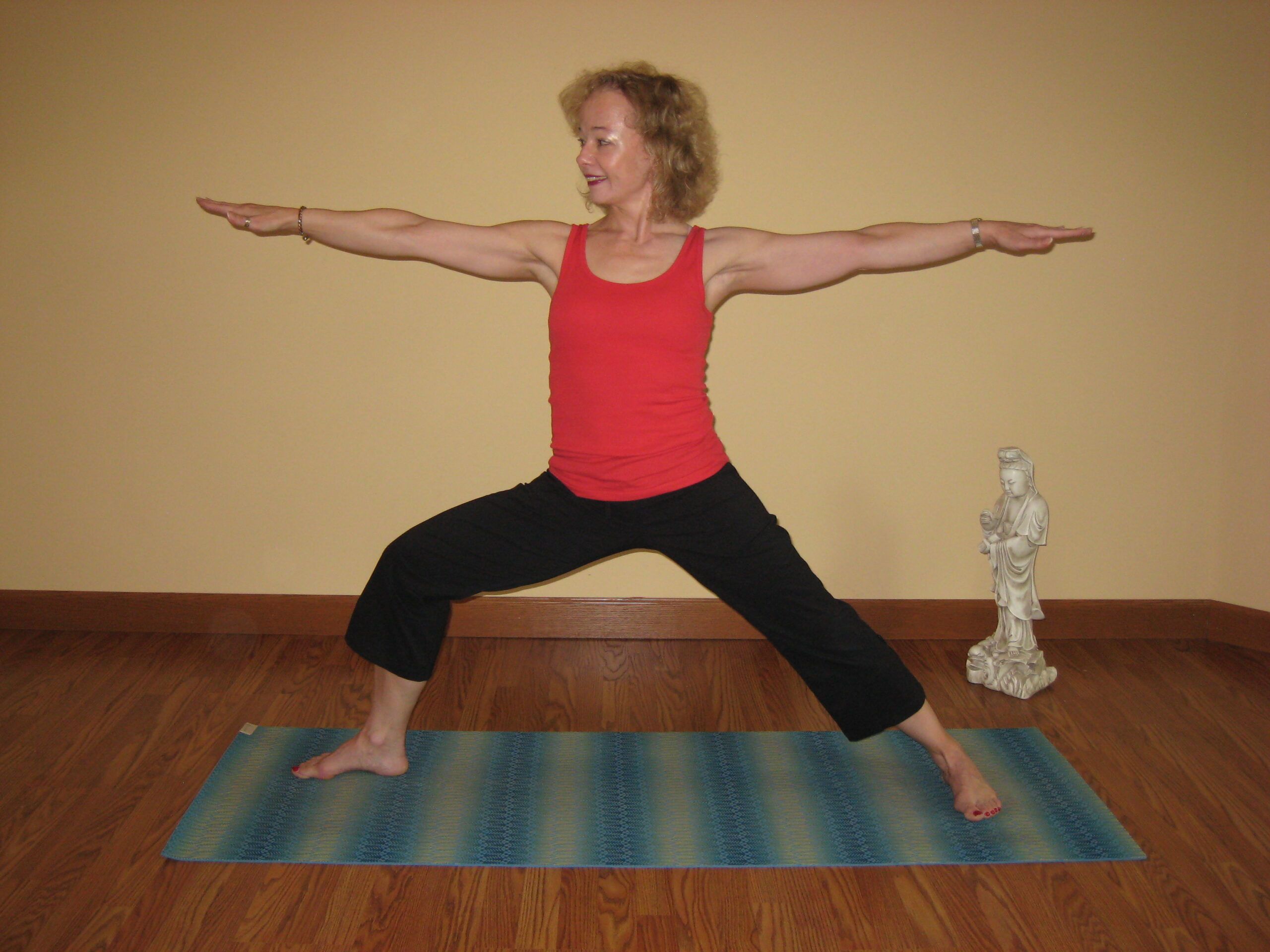
Another school of thought on foot placement:
Aligning the front heel to the inner arch of the back foot is another foot placement possibility. This opens the hips a bit more.
You can also come into this pose by stepping backward from mountain pose and following the directions above for body placement. See advanced options below for another way to come into the pose.
Benefits:
- Strengthens the ankles, knees and hips
- Stretches the legs, ankles, chest, and lungs
- Tones abs, arms and upper back
- Improves balance
- Encourages determination
- Increases stamina and flexibility of the hips
- Relieves backaches and can be therapeutic for flat feet, carpel tunnel syndrome, and sciatica.
- Alleviates the condition of a broken, fused, or deviated tailbone. (B.K.S. Iyengar)
- Reduces fat around the hips. (B.K.S. Iyengar)
Beginner’s tip: Still unsure on your form or new to yoga? You can try a practice pose.
For less intensity, you can have less of a bend in the front leg by straightening it a bit and/or also by shortening the stance front to back. Also remember you always have arm options. If the shoulders are tired, you can bring them to your heart center in “Namaste” position; and if you have neck issues, don’t turn your head to look over the front arm. Continue looking straight ahead.
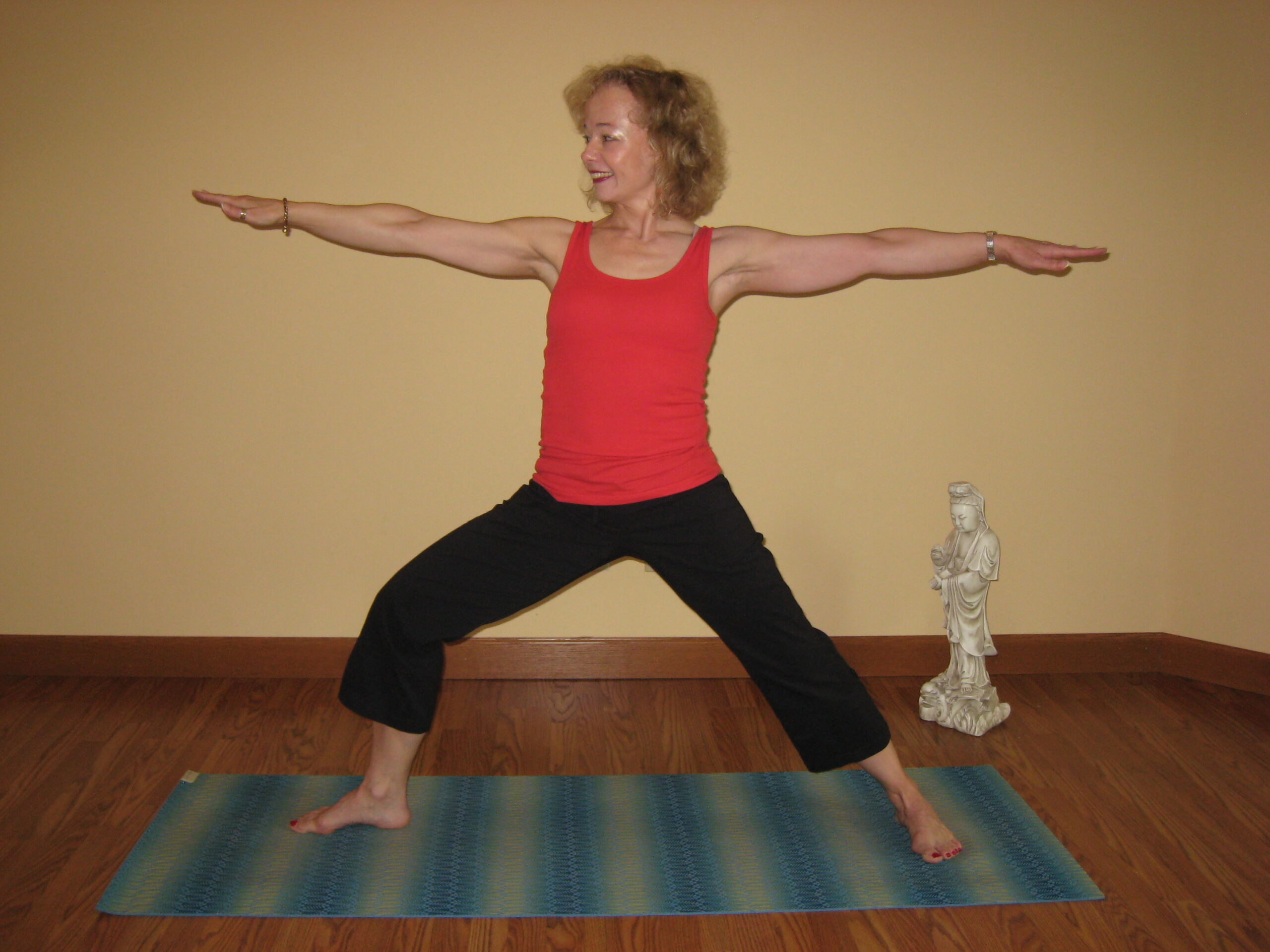
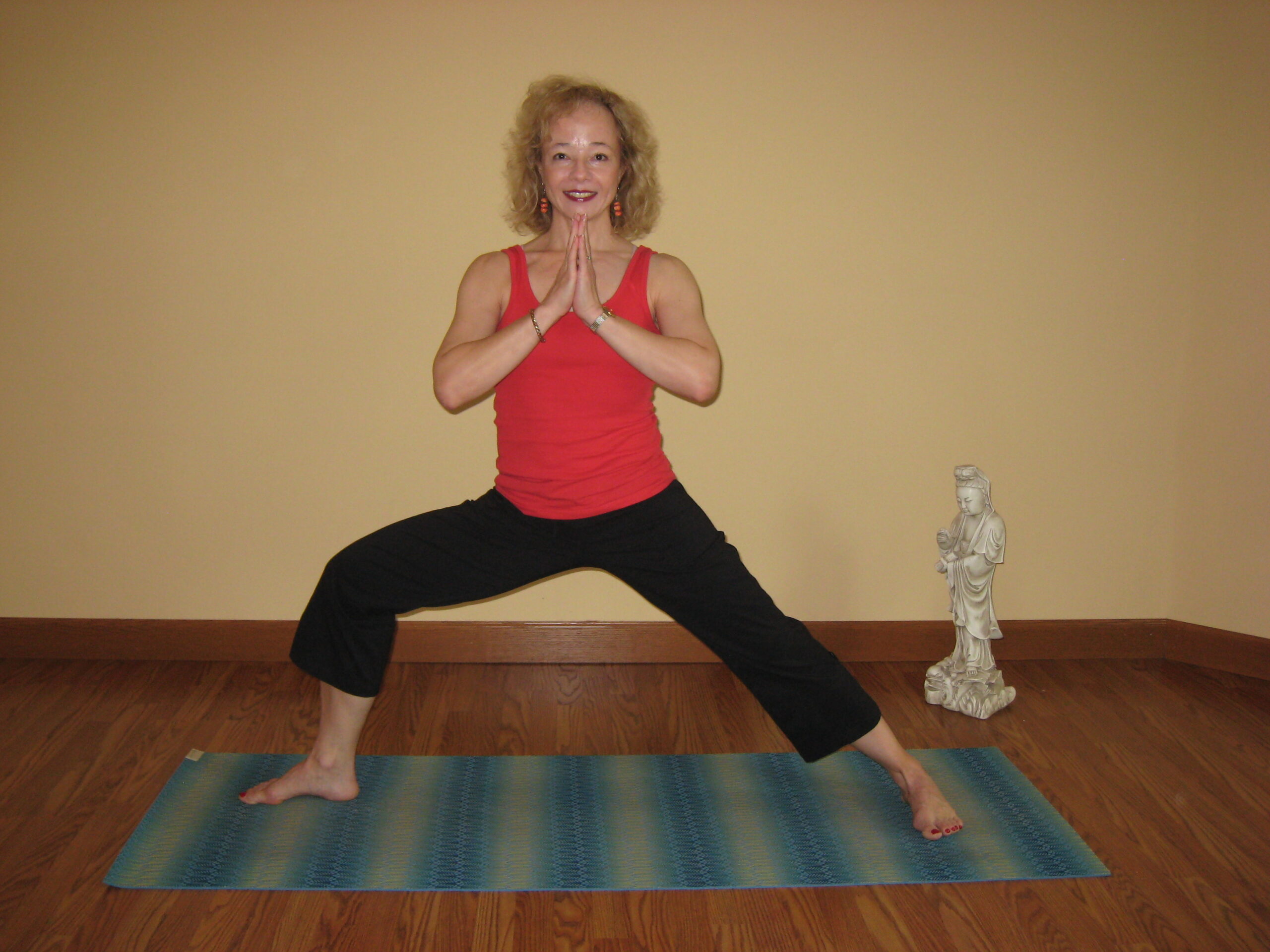
Wondering about your form? You should be able to see your big toe of the front leg as you look down, ensuring that your knee is stacked directly over the ankle. If you can’t see your big toe, self-adjust aiming the inside of the front knee toward the pinky side of the front foot keeping the knee tracking over the middle toe. Don’t allow your torso to either move right or tilt forward keeping your left armpit and your left hip in a straight line.
Add a chair: For those who have trouble supporting yourself in this pose, you can add a chair under the front thigh. Add props, such as a blanket, to make the height of the support fit your personal requirements.
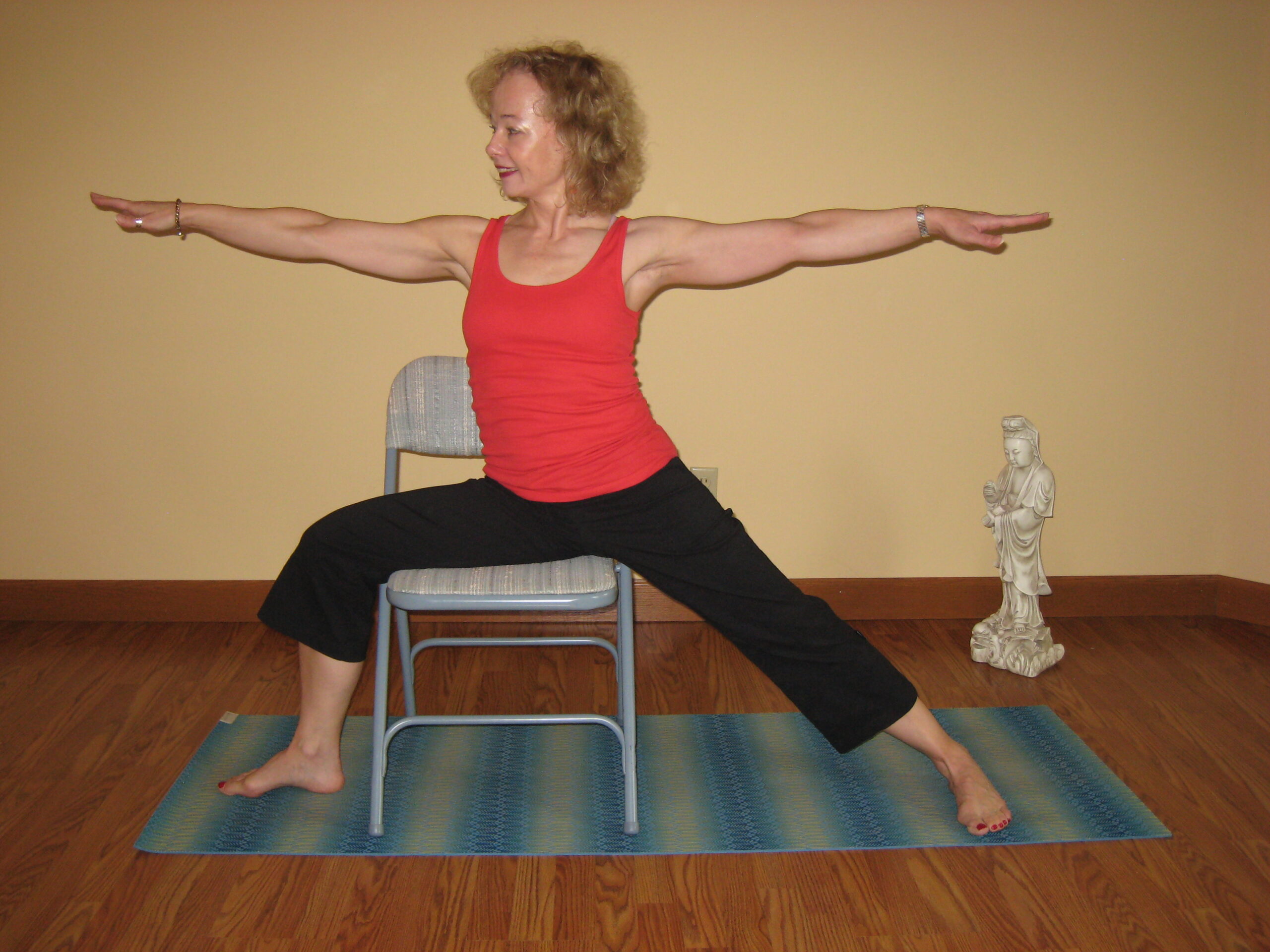
Advanced option: For more challenge, you can come into Warrior II from Down Dog by stepping your right foot forward into a lunge and rotating the back foot out to the left approximately 90 degrees, Photo #5. Then use your core strength as well as the grounded front leg to lift the torso up to standing while bringing your arms out to your sides parallel to the floor at shoulder level as described above.
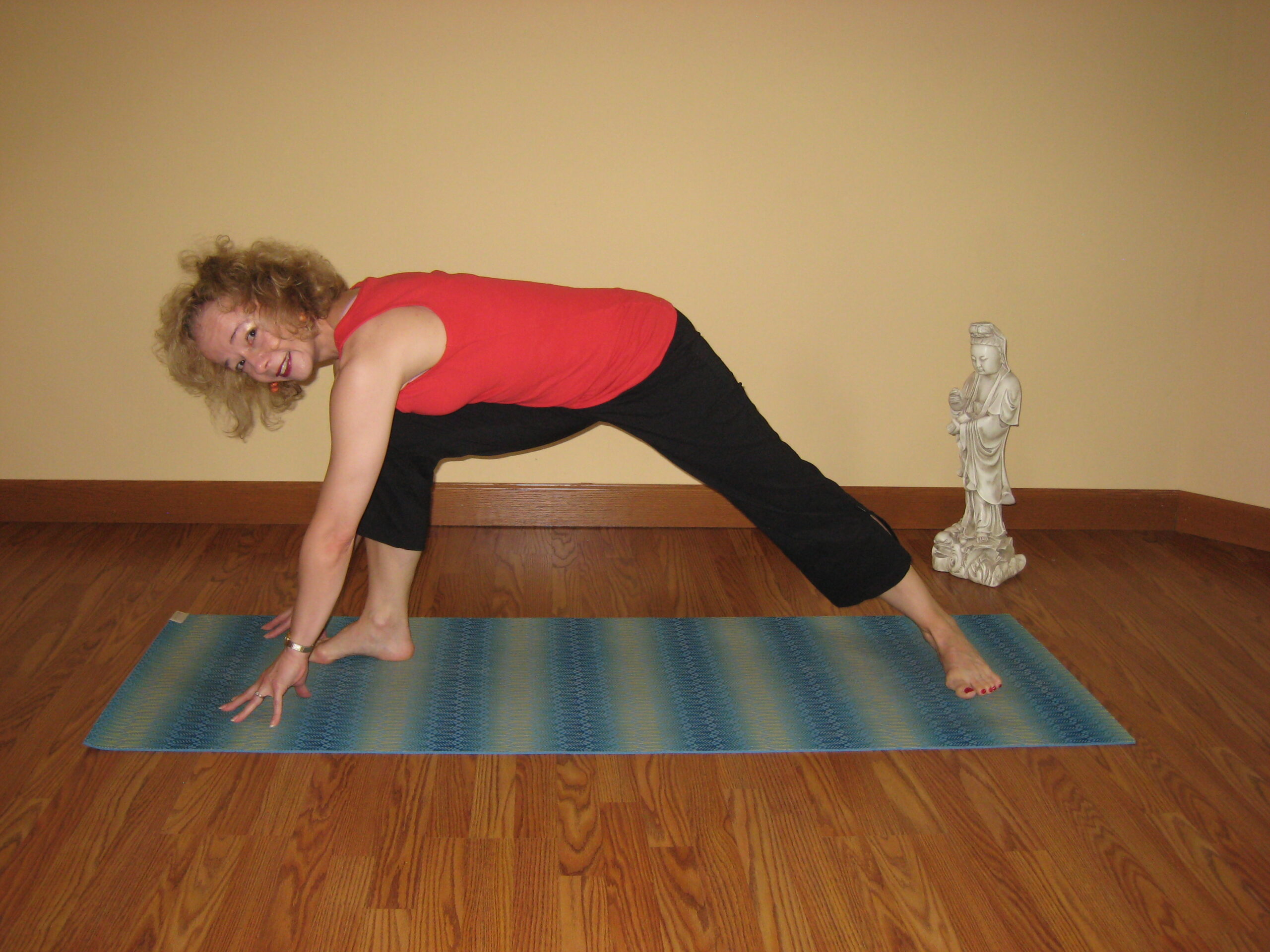
Deepen The Arm position: Try turning the palms and inner elbow creases (the eyes of the inner elbows) to face the ceiling while you draw the shoulder blades down the back. Then, keeping the rotation of the arms, turn the palms from the wrists to face the floor again.
Similar to the Warrior I arm positions in last month’s newsletter, there are many other arm holds that we can incorporate with Warrior II, such as cow-face arms (which I’ll cover another day!); and, alternatively, simply holding the elbow with the opposite hands behind the back, (not pictured). Cactus arms and yoga mudra arms were covered last month. Please refer to the archives to review.
Contraindicated for:
- Recent or chronic injury to the hips, knees, back, shoulders, or neck.
- Those with high blood pressure or other cardiac condition
- Those with heartburn, diarrhea, or dysentery
